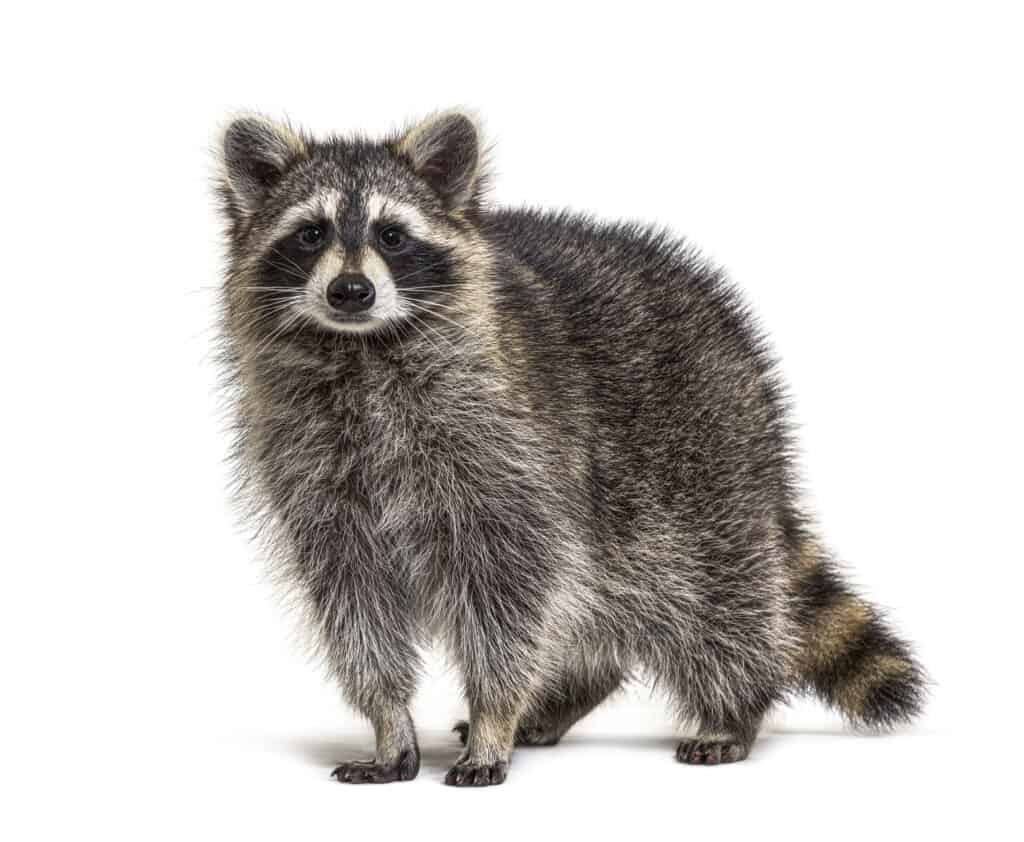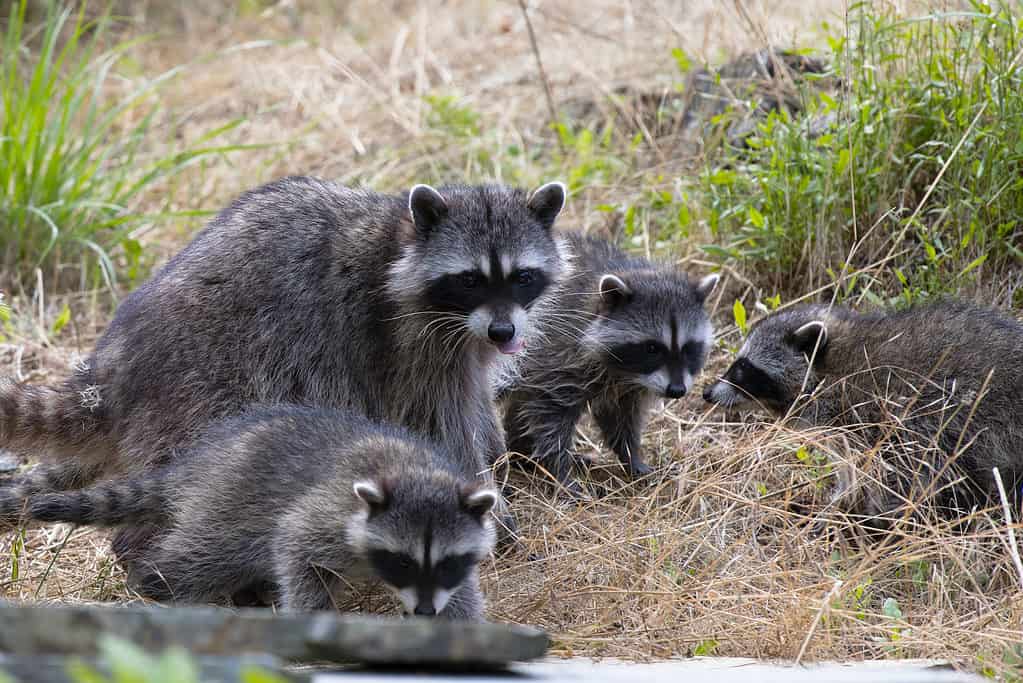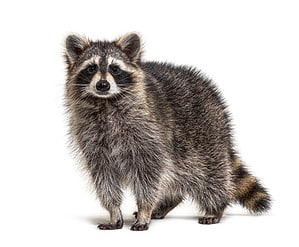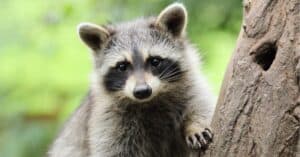Raccoons can be found in almost every habitat that provides them with food, shelter, and water across the continental United States. There are a number of distinguishing features on a raccoon’s face. The enormous black “mask” around each eye is the most striking feature. They start at the tip of the nose and finish at the bottom of the cheek. Raccoons also have white areas on their faces, namely on top of their eyes and around their noses. Raccoons are primarily covered in fur that is a grayish-brown color, and their tails feature four or six black rings.
These masked creatures may have made an appearance in your own trash can on more than one occasion. Because of this, we often refer to them as “garbage bandits.” They do particularly well where people live in the United States because of the availability of food waste. Raccoons are such a common site, you might be curious about the global population of raccoons. Let’s look into this and find out!
How Many Racoons Are There in the World?

While raccoons may be adorable, it’s important to remember that they’re one of the main carriers of rabies in the U.S.
©iStock.com/GlobalP
The raccoon population in North America has been reported to range from 5 million to 10 million. The number may even be upwards of 20,000,000. Up to 700 raccoons were counted in a single square mile in some areas of the United States. Between 200,000 and 400,000 raccoons are thought to reside in Germany alone.
Native to North America, raccoons may be found practically everywhere in the country with the exception of the Rocky Mountains and several southwestern states. It also occurs in the northernmost portions of Canada, Mexico, and South America.
Raccoons can be found in every state apart from Alaska. Some have even referred to Toronto as the “raccoon capital of the world.” The (potentially endearing) “trash pandas” have shown to be masters at raiding the garbage cans of Toronto residents.
Is Raccoon Endangered Or Not?
The International Union for the Conservation of Nature (IUCN) has designated the raccoon as a species of “Least Concern” on its list of endangered species. Between the 1930s and the 1980s, the raccoon population in North America increased by a factor of 15 to 20. Since then, it has increased even more as raccoons have spread into formerly uninhabited places, such as deserts and mountain ranges.
Are There Any Extinct Raccoons?

Raccoon mothers are devoted to their young and will go to great lengths to protect them.
©iStock.com/Wirestock
Formerly only found on the island of Barbados in the Lesser Antilles, the Barbados raccoon (Procyon lotor gloveralleni) became extinct in 1964. The Barbados raccoon is a good example of insular dwarfism due to its modest size when compared to a typical common raccoon. The Barbados raccoon was similar to the Guadeloupe raccoon in appearance, sharing characteristics such as a short, delicate head and dark gray fur with a faint ocher hue near the neck and shoulders. Similarly, the hairs on the underside were exposed due to the sparse covering of guard hairs. The mask covered the entire face.
Since the last confirmed sighting of a Barbados raccoon was in 1964, when one was struck and killed by a car near Bathsheba, the International Union for the Conservation of Nature (IUCN) declared the species extinct in 1996. The Barbados raccoon probably never reached significant numbers anywhere other than the southern half of the island due to its limited range. One of the leading causes of its extinction was the disruption of its habitat by tourists.
What Are Racoons Good For?
Raccoons, despite their reputation for mischief, are beneficial to ecosystems because they help disperse plant seeds and serve as gardeners, pest controllers, and the “clean-up crew.”
Without raccoons, there would be an increase in the rat and mouse population since raccoons feed mostly on rodents, and an increase in the bug population because raccoons also feed on insects. Raccoons are notorious seed dispersers due to their extensive foraging activities. Both the seeds they ingest and the ones they catch on their fur end up in the environment.
In addition to their direct ecological value, they also serve as food for a number of pivotal predators. Raccoons have several natural predators, including coyotes, fishers, bobcats, red foxes, and great horned owls. The loss of raccoons could have far-reaching implications because of the disruption they would cause to the food chain.
Are Racoons Dangerous?
Most people are aware that raccoons can spread rabies. A rabid raccoon is more prone to attack, but attacks can come from healthy raccoons as well. Although these creatures resemble cuddly bandits, they may actually be rather dangerous if approached too closely. Raccoons can be hazardous to humans and animals if they feel threatened or if they are defending their young. Never approach a wild animal, even if it seems tame, like a raccoon.
The photo featured at the top of this post is © L-N/Shutterstock.com
Thank you for reading! Have some feedback for us? Contact the AZ Animals editorial team.






